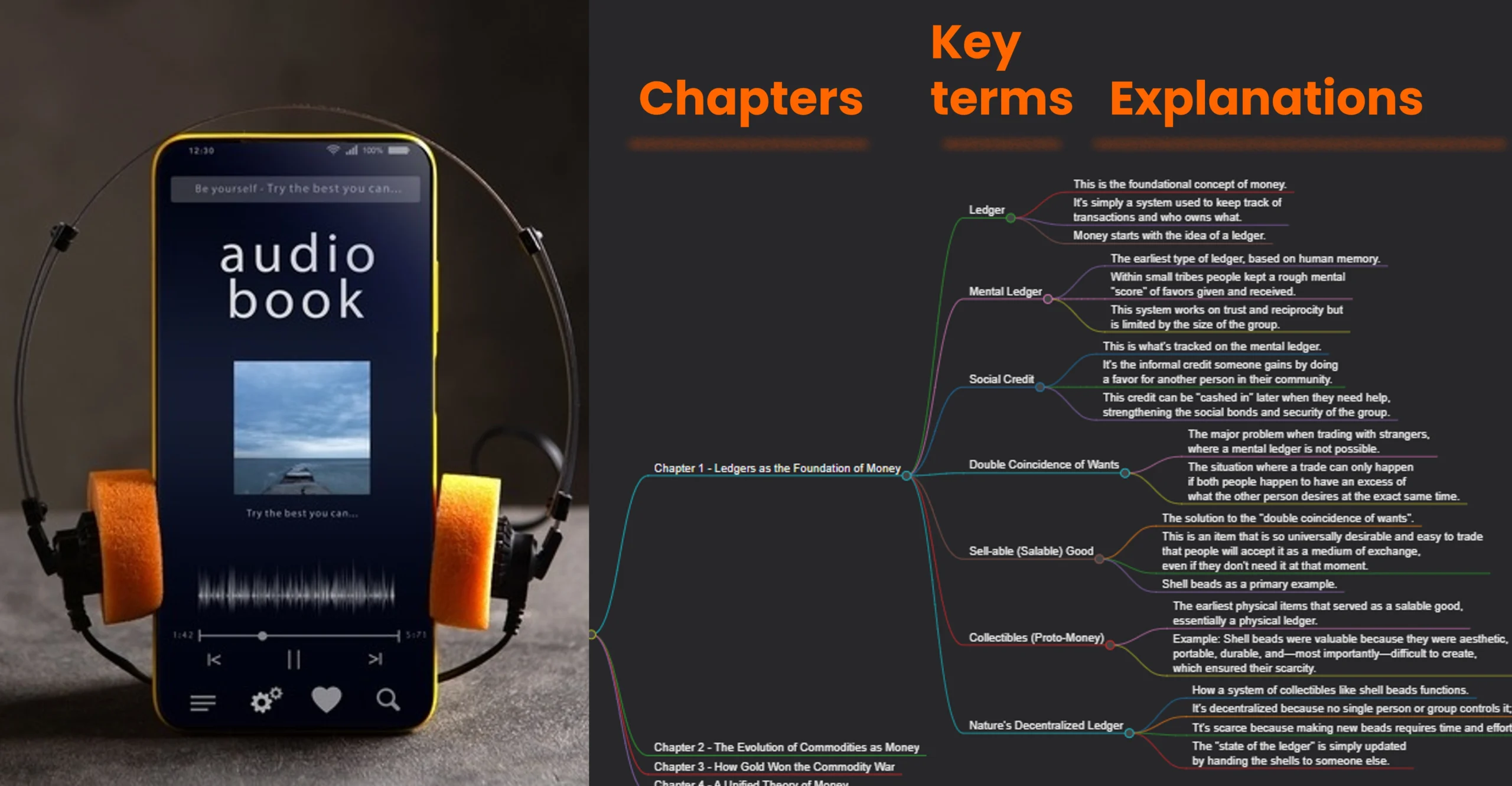The Problem with Traditional Audiobook Listening
If you're like most audiobook listeners, this scenario probably sounds familiar: You finish an excellent book, feeling inspired and full of new insights. A week later, someone asks you what the book was about, and you struggle to recall more than a few vague concepts. A month later, you can barely remember the main thesis.
This isn't a failure of memory—it's the predictable result of passive consumption. When we simply listen without actively processing information, our brains treat audiobooks like background noise rather than learning material.
Research in cognitive psychology shows that passive listening leads to what experts call "the illusion of knowing." We feel like we understand and remember content while we're consuming it, but without active engagement, most information never makes it into long-term memory.
Why Active Learning Works Better
Active learning transforms consumption into construction. Instead of hoping information will stick, you deliberately build knowledge structures that support long-term retention and practical application.
The difference comes down to how our brains process information. Passive listening engages primarily our auditory processing centers. Active learning engages multiple cognitive systems: auditory processing, language comprehension, analytical thinking, and memory consolidation.
When you actively work with information—organizing it, explaining it in your own words, and connecting it to existing knowledge—you create multiple pathways for recall.
The Six-Step Active Learning Method
Over years of experimenting with different approaches to audiobook learning, I've developed a systematic method that consistently delivers results. This approach transforms any audiobook into a lasting knowledge resource you can revisit and apply indefinitely.
Step 1: Consume Chapter by Chapter
The foundation of effective audiobook learning is intentional pacing. Instead of letting chapters blend together in a continuous stream, treat each chapter as a discrete learning unit.
Listen to one complete chapter, then pause. This creates natural break points for processing and prevents cognitive overload. Your goal isn't speed—it's comprehension and retention.
During listening, resist the urge to multitask. Give the content your full attention. If your mind wanders (and it will), rewind rather than pushing forward. Quality of attention matters more than quantity of content consumed.
Step 2: Create an Externalized Knowledge Graph
Here's where active learning begins. Instead of relying on your brain to remember everything, create an external representation of your new knowledge. Think of this as building a map of the book's ideas.
An externalized knowledge graph serves multiple purposes: It forces you to identify and organize key concepts, creates a reference you can return to, and transforms abstract ideas into concrete, reviewable material.
You can create this graph using any tool you're comfortable with—a simple text document, note-taking apps like Obsidian or Roam, or even pen and paper. The medium matters less than the practice of externalization.
Step 3: Use the Book's Structure as Your Foundation
Authors organize their books deliberately. They've already done the work of structuring information in a logical flow. Leverage this existing structure instead of trying to create your own from scratch.
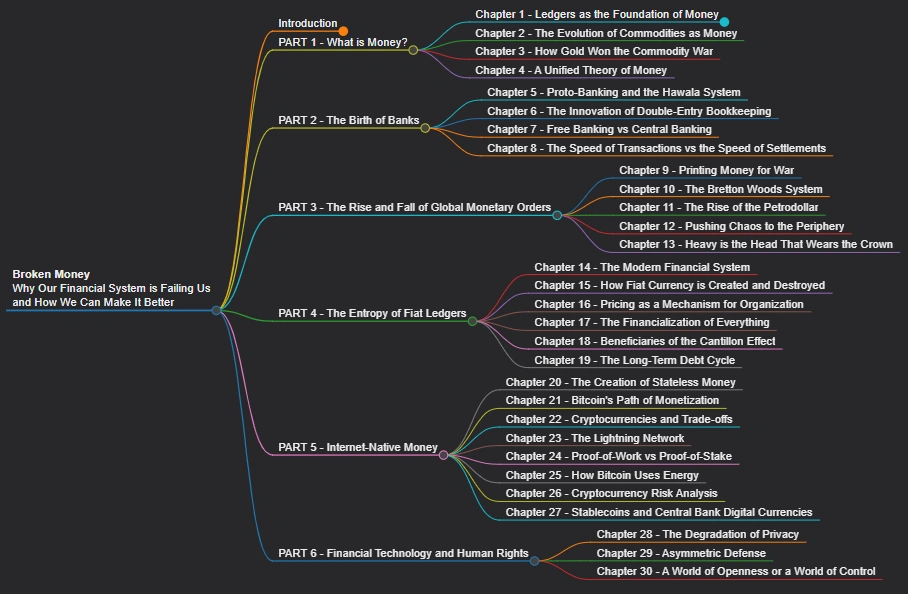
Start your knowledge graph with the book's chapter titles and main section headings. This gives you a ready-made skeleton for organizing your insights and ensures you don't lose sight of the author's intended progression of ideas.
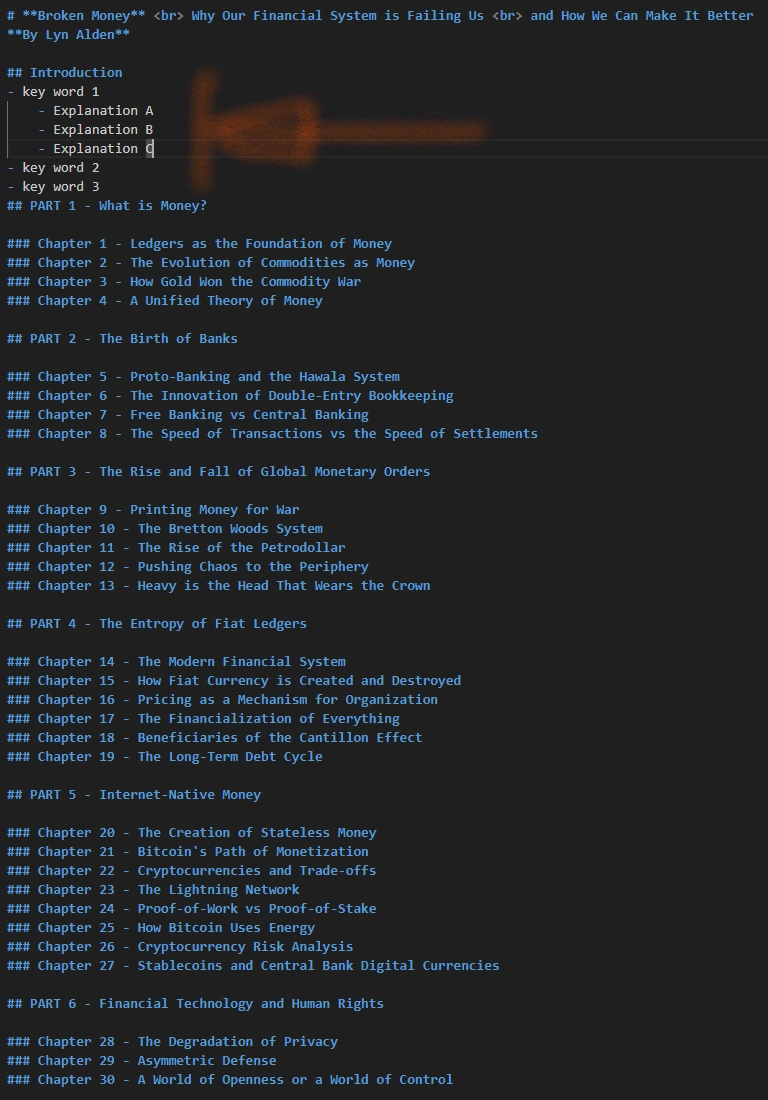
As you work through each chapter, add your key takeaways under the appropriate headings. This approach maintains the book's logical flow while adding your personal layer of understanding.
Step 4: Extract Key Terms in Argumentative Order
This step requires the most active thinking, but it's also the most valuable. For each chapter, identify the essential terms that carry the author's argument forward. List them in the order they appear in the chapter's logic.
The key insight here is that if you understand each term and remember their sequence, you can mentally reconstruct the entire chapter's argument. It's like having a detailed outline that triggers complete recall.
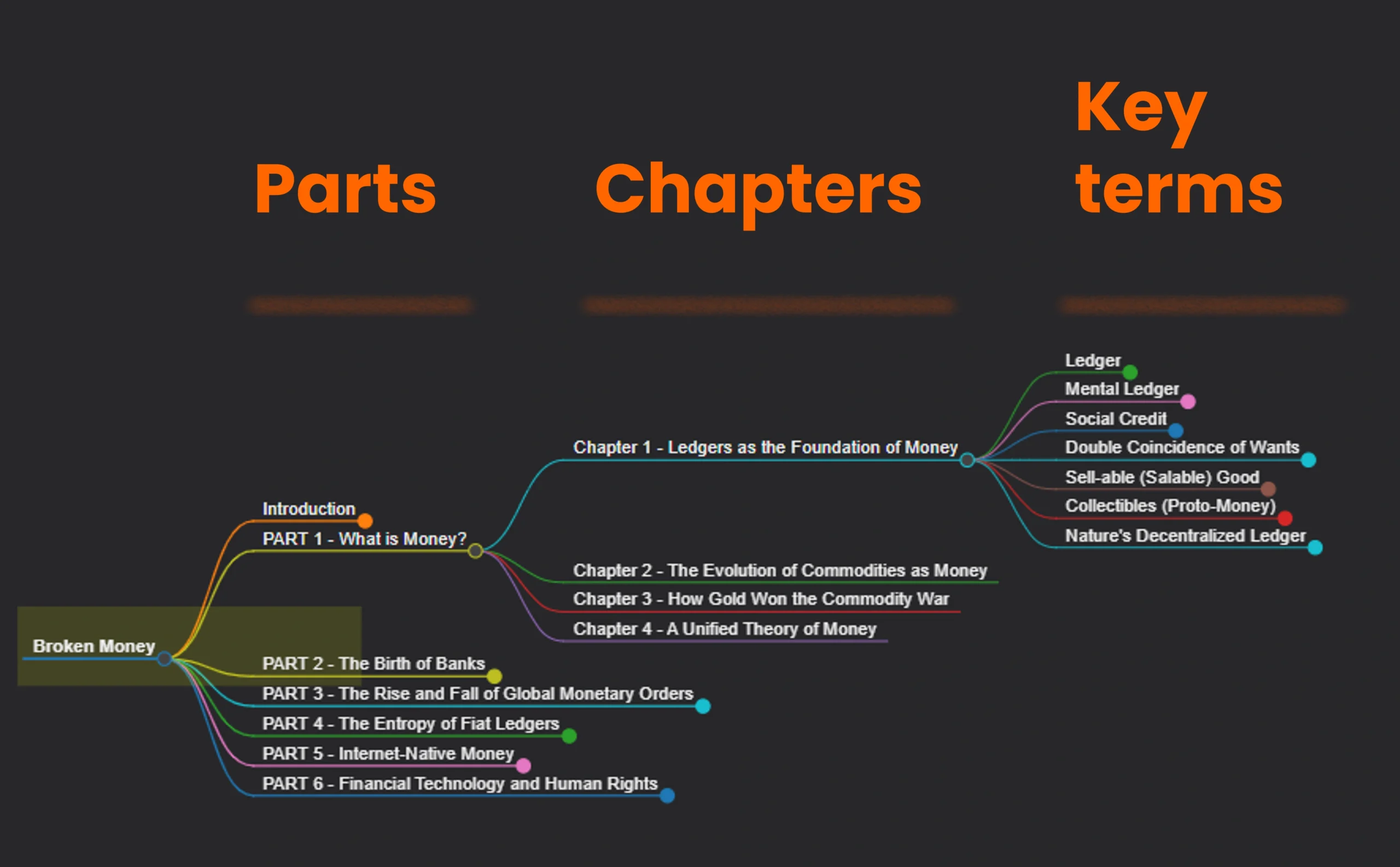
For example, if you're reading a chapter about habit formation, your key terms might be: "cue → routine → reward → repetition → automaticity → identity change." Each term represents a crucial link in the author's chain of reasoning.
This approach works because our brains are excellent at following logical sequences when we have the right triggers. By capturing these terms, you're creating mental anchors that support comprehensive recall.
Step 5: Write Explanations in Your Own Words
Simply listing key terms isn't enough. To ensure genuine understanding, write a brief explanation of each term in your own words. This step serves as both a comprehension check and a future reference.
When you can explain a concept in your own language, you've moved beyond memorization to understanding. If you struggle to explain something clearly, it's a signal that you need to revisit that section of the audiobook.
Your explanations don't need to be lengthy—a sentence or two is usually sufficient. The goal is to capture the essence of each concept in language that makes sense to you.
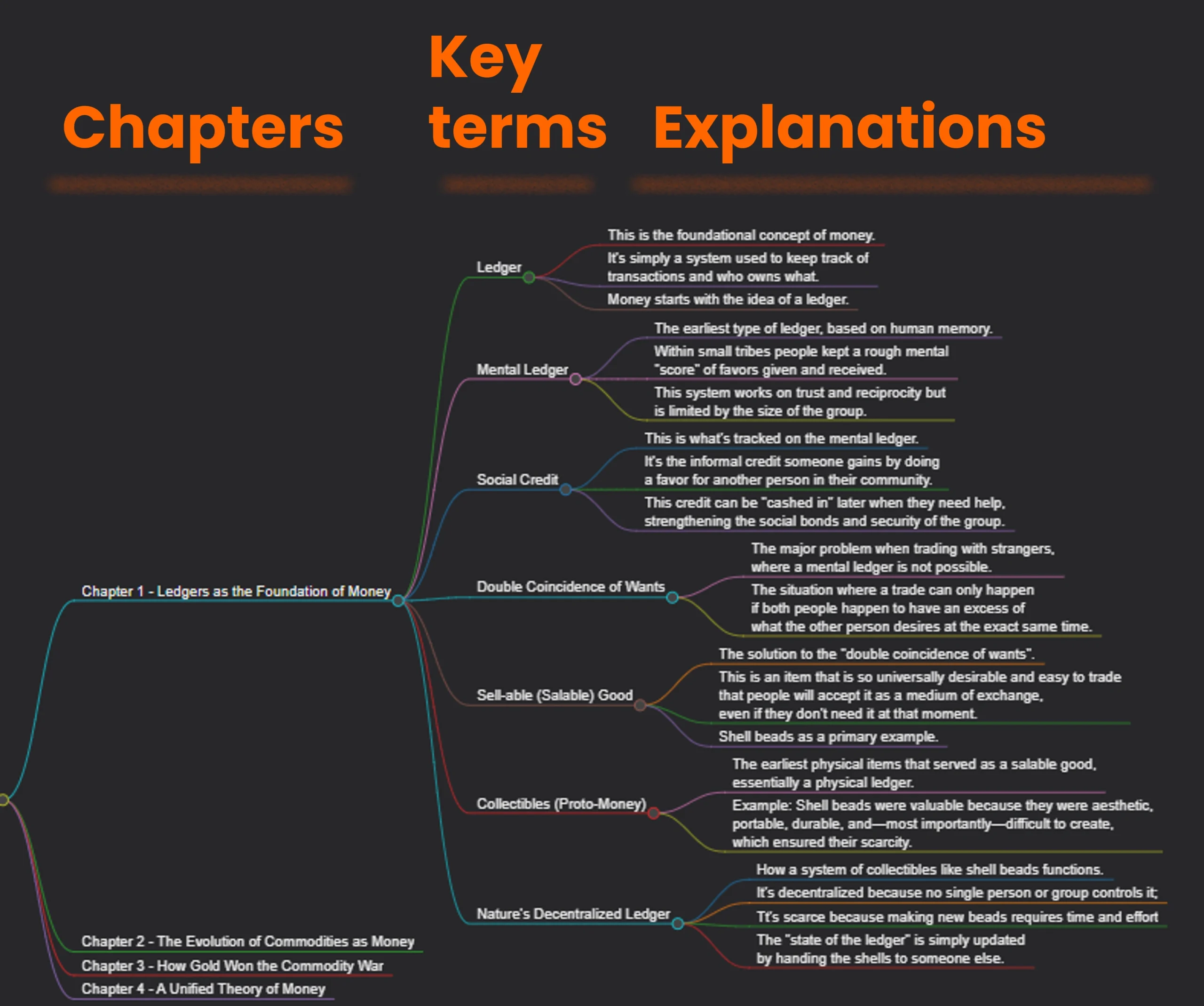
This practice also protects against future forgetting. Months later, when you've forgotten the author's specific phrasing, your own explanations will still make sense to you.
Step 6: Practice Deliberate Review and Application
Creating your knowledge graph is just the beginning. The real value comes from putting it to work through deliberate practice.
Use your graph for periodic review. Once a week or month, spend a few minutes walking through your key terms and explanations. This spaced repetition strengthens long-term retention and keeps important concepts accessible.
For deeper engagement, try these applications:
- Create flashcards using your key terms and explanations for active recall practice
- Look for connections between concepts from different books in your knowledge collection
- Use key terms as building blocks for your own writing or thinking
- Test your understanding by explaining concepts to others
The Time Investment Reality
This method requires more time upfront than passive listening. A typical chapter might take 30-45 minutes to listen to, plus another 10-15 minutes for knowledge graph creation. That's roughly 50% more time investment.
However, this upfront investment pays massive dividends. With your knowledge graph complete, you can review an entire book's worth of insights in under an hour. Compare this to re-listening to a 10-hour audiobook, and the efficiency gains become clear.
More importantly, the knowledge you build through this method actually sticks. You're not just consuming more content—you're building a permanent, accessible knowledge base.
Tools and Practical Setup
You don't need complex software to implement this method. Here are some practical approaches:
Simple approach: Use a basic text editor or word processor. Create a document for each book with chapter headings and bullet points for key terms and explanations.
Digital note-taking: Tools like Notion, Obsidian, or Roam Research excel at creating connected knowledge graphs. These platforms make it easy to link concepts across different books.
Hybrid approach: Some people prefer handwriting for initial capture (which can improve retention) then transferring to digital format for long-term storage and searchability.
Choose whatever system you'll actually use consistently. The best system is the one you stick with, not necessarily the most sophisticated one.
Common Challenges and Solutions
Challenge: "This Takes Too Long"
The time concern is understandable but misguided. Yes, this method takes longer than passive listening. But passive listening doesn't actually create lasting learning—it creates the illusion of learning.
Consider the alternative: How much time do you spend re-consuming content you've forgotten? How often do you wish you could remember and apply insights from books you've read? Active learning eliminates both problems.
Challenge: "I Can't Identify Key Terms"
This skill develops with practice. Start by looking for terms the author repeats or emphasizes. Pay attention to concept definitions and transitions between ideas. When in doubt, err on the side of including too much rather than too little.
Over time, you'll develop intuition for recognizing the backbone of an argument versus supporting details.
Challenge: "My Notes Become Too Long"
If your knowledge graph becomes unwieldy, you're likely capturing too much detail. Focus on the minimum viable set of key terms that allow you to reconstruct the chapter's main argument. Supporting examples and extended explanations can be omitted.
Remember: the goal is creating triggers for recall, not transcribing the entire book.
Measuring Success
How do you know if this method is working? Here are some concrete indicators:
- You can explain key concepts from books you finished months ago
- You notice connections between ideas from different books
- You find yourself applying specific insights in real situations
- You can quickly refresh your memory of a book's main points using your knowledge graph
- Other people comment on your ability to articulate complex ideas clearly
Beyond Individual Books: Building a Knowledge System
The real magic happens when you apply this method consistently across multiple books. Over time, you build a personal knowledge system—a collection of insights, frameworks, and concepts that compound in value.
Individual books become components of a larger intellectual toolkit. You start noticing how different authors approach similar problems, where ideas complement or contradict each other, and which concepts appear repeatedly across domains.
This meta-level perspective transforms you from a consumer of other people's ideas into an active synthesizer of knowledge.
Getting Started Today
You don't need to commit to this method for every audiobook immediately. Start with your next book—or even just the next chapter of your current book.
Choose something you genuinely want to remember and apply. Create a simple document with the chapter title, listen carefully, then spend 10 minutes capturing key terms and writing brief explanations.
Notice how this changes your relationship with the content. You'll likely find yourself listening more attentively, thinking more critically, and retaining more information.
The shift from passive consumption to active learning isn't just about remembering more from audiobooks—it's about developing a more intentional, effective approach to lifelong learning. In a world overflowing with information, the ability to genuinely learn and retain knowledge becomes a significant competitive advantage.
Start small, stay consistent, and watch as your audiobook listening transforms from entertainment into education.
